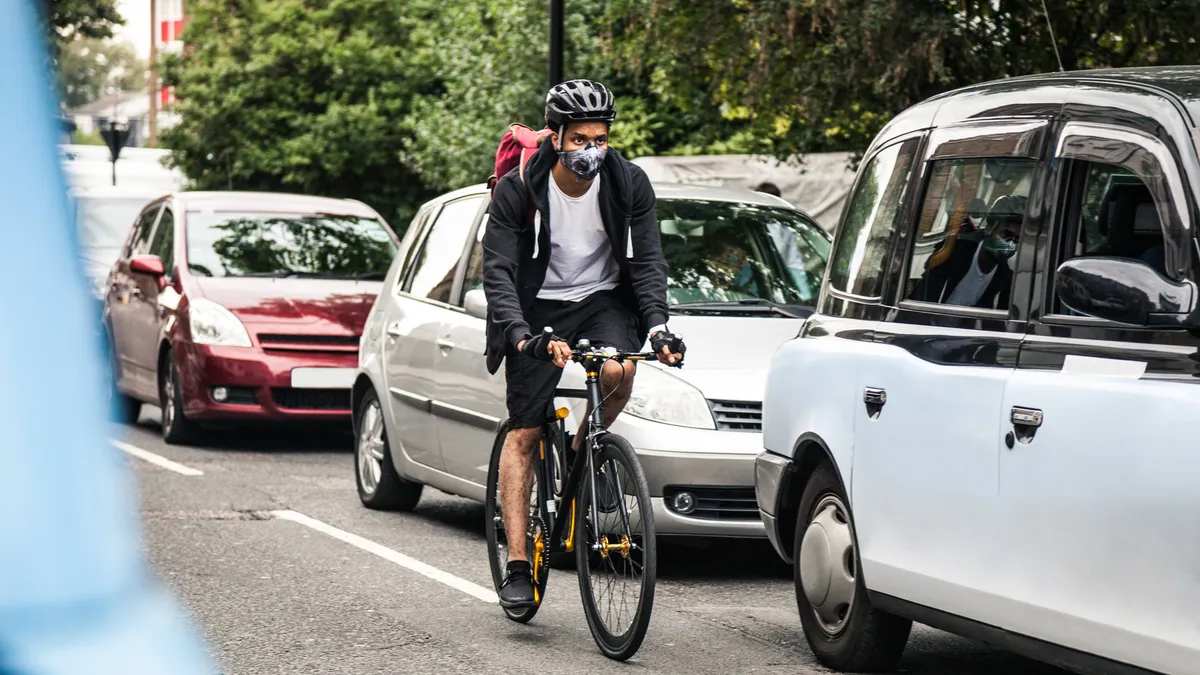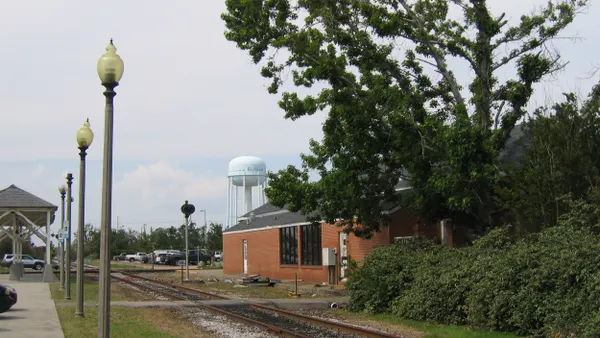Dive Brief:
- Bike activity in the U.S. was up 10% in the summer of 2021 compared to 2019 and was virtually flat compared to the summer of 2020, according to a report this month from Streetlight Data. The report relies on data from Streetlight's InSight Multimode Metrics, which records and analyzes ridership of different transportation modes.
- The increase in cycling was a nationwide trend, but some cities showed greater increases than others. Atlanta and Las Vegas, for example, saw bicycling traffic rise by 25% in 2021 compared to 2019 despite showing modest gains in 2020, while the mid-sized cities of Birmingham, Alabama; Charleston, South Carolina; Jackson, Mississippi; and Little Rock, Arkansas all had gains of 50% or more.
- Between 2020 and 2021, some West Coast and Midwest cities actually saw cycling activity decrease and some large cities even saw a decrease compared to 2019. Still, Streetlight Data called the findings “Good news for cycling overall” and evidence of the role new infrastructure plays in promoting biking.
Dive Insight:
During the initial summer of the COVID-19 pandemic, bicycling boomed as more people took advantage of reduced traffic and open streets programs. While some experts questioned whether the increase was a blip, the Streetlight Data report shows that bike ridership seems to be here to stay — if cities can support it.
“Bicycle demand in our world is about short trips,” said Martin Morzynski, vice president of marketing for StreetLight Data. “If you can identify neighborhoods where people are taking short trips by car, there is an opportunity to increase biking with more infrastructure and support. Either people are on bikes already or you have the opportunity to create a biking culture.”
There was no single story across the country, Morzynski said, but there was a clear correlation between infrastructures like protected bike lanes or open streets and bike traffic. For example, he said, Des Moines, Iowa, saw its bike traffic increase 49% in 2020 and it is still up 30% in 2021 compared to 2019, even as people resume commuting. That, he said, is in part because of the city's existing network of trails leading into downtown that make it easier for new riders to commute.
Ironically, cities with a more established biking culture and more robust infrastructure actually drove down the national average during the pandemic, with 19 cities including Boston, Washington, D.C., Los Angeles and Chicago showing decreases. That’s because there were fewer regular bike commuters on the roads.
Nashville, Tennessee, and its metro area saw a 45% jump from before the pandemic, going from the 81st most active cycling metro in 2020 to the 16th in the latest report. Lindsey Ganson, director of advocacy and communications for Walk Bike Nashville, said that increase was despite a lack of sustained investment in robust bike infrastructure. The advocacy group partnered with Streetlight Data in 2020 to gather data on traffic volumes and speeds in order to advocate for safer infrastructure and traffic calming metrics. Investments in tools like protected bike lanes and better crosswalks, Ganson said, could make biking and walking "low-stress" and lead to even more ridership increases.
“I don’t think we’ve even seen the beginning of how much of a biking city Nashville can become,” Ganson said. “If we match the demand with real infrastructure, who knows what our numbers could be.”
Cities have used the reduced traffic in the pandemic to boost their bike infrastructure. New York City, for example, planned to add an estimated 30 miles of bike lanes this year, including a new lane on the Brooklyn Bridge. Chicago plans to add 100 miles of new bike lanes by the end of 2022. San Francisco completed a network of protected bike lanes in its South of Market neighborhood, which includes stadiums, museums and office space.
“When people have a safe way to bike to work, they’re much more likely to do so, and with Muni [public transit] service still impacted, this is another way besides driving that people can commute,” San Francisco mayor London Breed wrote earlier this year.
The $1.2 infrastructure bill signed by President Joe Biden this month includes a 60% increase in federal funding for transportation alternatives, language to encourage complete streets policies and climate-friendly language that advocates say will promote bike infrastructure. Additionally, the $1.75 trillion Build Back Better budget resolution passed by the House would fund $4 billion in grants for more equitable transportation infrastructure, $4 billion for state greenhouse gas performance measures and would reinstate a tax benefit for people who commute by bike.
That funding, coupled with a systems-wide approach to transportation planning, could help more cities figure out the best ways to encourage biking and sustain the trends of the pandemic, Morzynski said.
“We believe that a comprehensive approach that allows you to identify where best to invest and make priorities sets you up to be responsive for changes when traffic patterns shift again,” he said. “There’s no one pattern, our country is really vast and wide when it comes to habits and weather and infrastructure, but we do see that the cities that invest in infrastructure, on the whole, are seeing success.”










